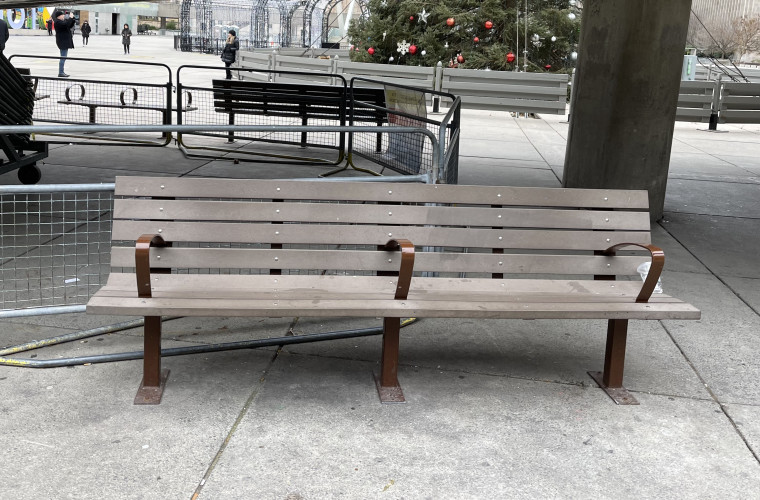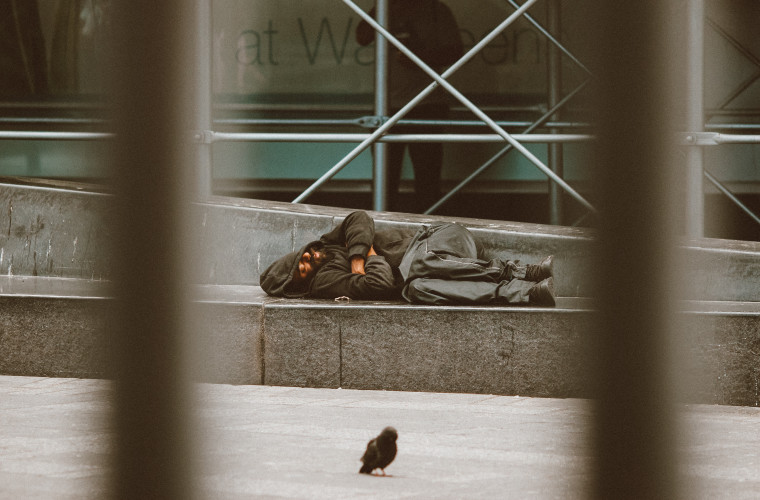Anti-Homeless Architecture in Toronto
by Jessika Krzyzewski on February 21st, 2022
Estimated reading time: 2 minutes
If you go for walks on the regular and take a break on a bench, you may have noticed that it has an armrest in the middle of it. It may feel nice to take a quick break and rest your arms, but this is not for your convenience nor comfort. This design is actually known as hostile architecture, also called anti-homeless architecture.

In order to prevent homeless individuals from finding a comfortable place to sleep, these hostile features in public spaces restrict a person’s ability to lay down. Examples of anti-homeless architecture include concrete spikes underneath an underpass or entrance to a building, slanted benches, street dividers, and raised grate covers. These designs only serve the purpose of keeping homeless people off of street benches and other public areas to avoid seeing them in public.
However, this type of architecture is rampant within the city of Toronto. Not only does this architecture negatively impact and target those who are homeless, it also makes it difficult for individuals with disabilities, the elderly, and young children to use public spaces. Hostile architecture only serves for protection of property and order maintenance - it harms those that society has deemed to be vulnerable, and rather than addressing lack of affordable housing and how inaccessible some public places are to people with disabilities, this architecture merely serves the purpose of shunning them.
Overall, instead of addressing these social issues in our society, the city has instead chosen the easier route of trying to hide homeless individuals from sight. Hostile architecture does not serve the public good - rather, it harms those most vulnerable in society by forcing them out of sight, as well as making it difficult for disabled people, the elderly, and young children to use public spaces. These spaces should be accessible to everyone, more now than ever due to the COVID-19 pandemic, since shelters are finding themselves overburdened as a result of strict capacity limits. Next time you are out for a walk, try and spot things that might be considered hostile architecture to see how common it is in your own neighbourhood.

References and Further Reading
https://locallove.ca/life/unsung-hero-toronto-housing-advocate-aiko-ito/#.Yfg1bfXMKu5
https://locallove.ca/issues/a-major-urban-design-trend-is-making-toronto-less-liveable/#.Yfg4WvXMKu5
https://locallove.ca/life/what-to-donate-to-homeless-shelters-and-what-to-skip/#.Yfg4YfXMKu5


